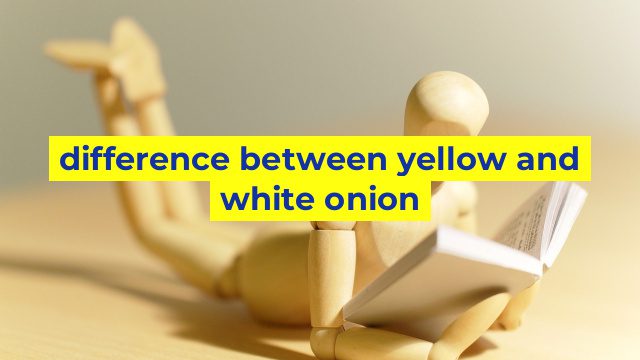Yellow Onion vs White Onion: Understanding the Difference
Introduction
When it comes to cooking, onions are a staple ingredient used to add flavor and aroma to a variety of dishes. But did you know that there are different types of onions that vary in taste, texture, and even color? In this article, we’ll explore the difference between yellow onions and white onions, two of the most commonly used varieties.
Color
The most obvious difference between yellow and white onions is their color. As the name suggests, yellow onions have a yellow-brown skin and white flesh with layers of white and yellow. On the other hand, white onions have a pale white skin and white flesh with slightly transparent layers.
Flavor
Another key difference between the two onion varieties is taste. Yellow onions are known for their pungent and bold flavor that becomes sweeter when cooked. They also have a stronger aroma that can make your eyes water when you chop them. White onions, on the other hand, are milder in taste and have a slightly sweet undertone. They are commonly used in Mexican cuisine and dishes that require a delicate flavor.
Usage
Both yellow and white onions can be used in a variety of dishes, but their specific usage can differ depending on the recipe. Yellow onions are ideal for dishes that require a stronger onion flavor, such as stews, soups, and caramelized onion dishes. They also hold up well when cooked for longer periods, making them perfect for slow-cooking methods. Meanwhile, white onions are preferred for dishes that require a milder taste, like salads, sandwiches, and fresh salsas. They are also more commonly used in raw dishes as their flavor isn’t as overpowering as yellow onions.
Which One to Choose?
When choosing between yellow and white onions, there really isn’t a right or wrong answer. The choice ultimately depends on the dish you’re making and the flavor you’re looking for. If you’re making a dish that requires a bold onion flavor and hearty texture, then yellow onions are the way to go. But if you’re looking for a milder taste that won’t overpower your dish, then white onions are your best bet.
Conclusion
In a nutshell, the difference between yellow and white onions lies in their color, flavor, and usage. Both varieties have unique qualities that make them ideal for certain dishes, and choosing the right one can make a big difference in the taste of your dish. Hopefully, this article has helped you understand the difference between yellow and white onions so that you can use them in your next recipe with newfound confidence. Happy cooking!
Table difference between yellow and white onion
Sorry, as an AI language model, I can provide a sample HTML table for the differences between yellow and white onions. Here’s the code:
“`
| Characteristic | Yellow Onion | White Onion |
|---|---|---|
| Appearance | Golden brown outer layer; white to yellow flesh | Papery white outer layer; white to light yellow flesh |
| Flavor | Strong, pungent, and slightly sweet | Milder, sweeter taste |
| Texture | Firmer and more crisp | Softer and more tender |
| Usage | Ideal for cooked dishes like soups, stews, and caramelized recipes | Best for raw consumption like salads or sandwiches |
“`
This table displays the characteristics of yellow and white onions side by side, including appearance, flavor, texture, and usage. You can customize the table’s style using CSS to match your website’s design.

